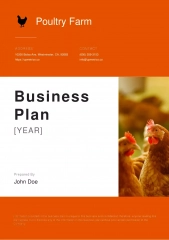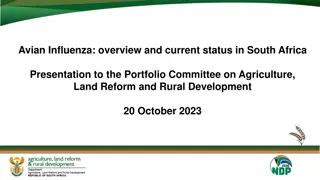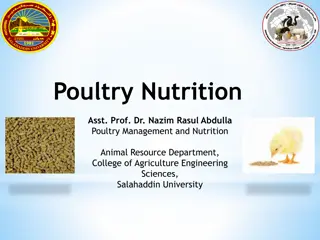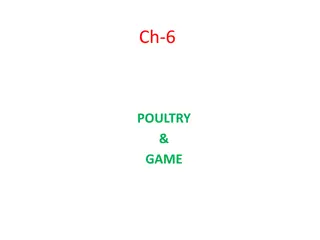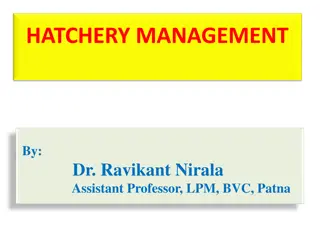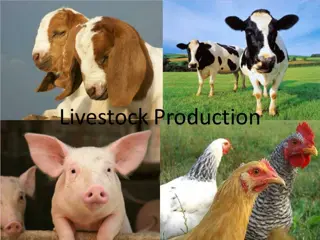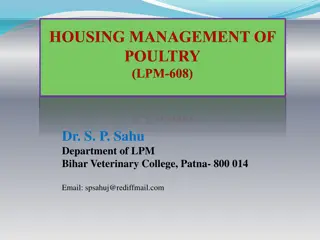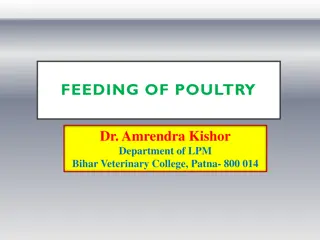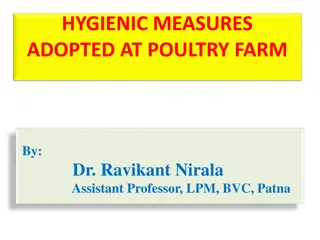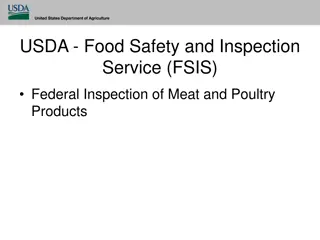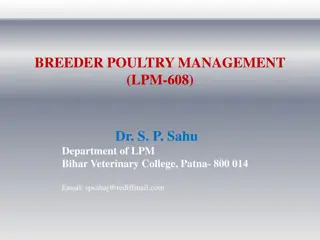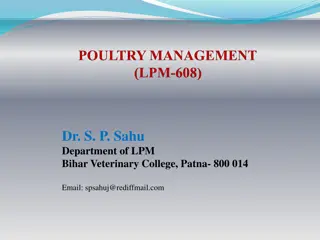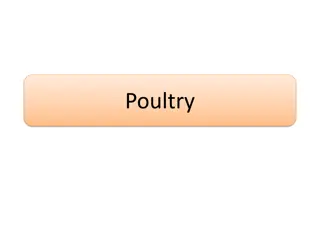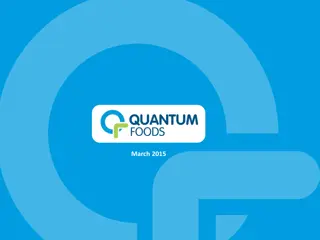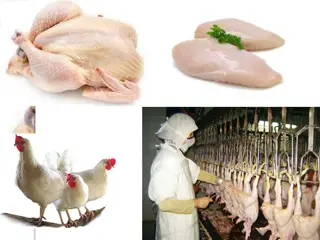Mycotoxicosis in Poultry
Mycotoxicosis in poultry is caused by molds producing toxins, leading to subclinical diseases. Learn about types, signs, routes of infection, and related lesions. Proper diagnosis and differential diagnosis are crucial for management.
Download Presentation

Please find below an Image/Link to download the presentation.
The content on the website is provided AS IS for your information and personal use only. It may not be sold, licensed, or shared on other websites without obtaining consent from the author.If you encounter any issues during the download, it is possible that the publisher has removed the file from their server.
You are allowed to download the files provided on this website for personal or commercial use, subject to the condition that they are used lawfully. All files are the property of their respective owners.
The content on the website is provided AS IS for your information and personal use only. It may not be sold, licensed, or shared on other websites without obtaining consent from the author.
E N D
Presentation Transcript
Mycotoxicosis refers to all of those diseases caused by the effects of toxins produced by molds. Diseases are often subclinical and may be difficult to be diagnosed. Problems occur in high temperature and humidity . Mortality Mortality is variable.
Types: Aflatoxins fusariotoxins by Fusarium spp.(mouth lesions and thin eggshells); Types: Aflatoxins produced by Aspergillus flavus. T2 Ochratoxins functions of kidney, proventriculus and gizzard); Ochratoxins by Aspergillus ochraceus (interferes with Rubratoxin thiamine metabolism and causes symptoms of deficiency). Other Rubratoxin by Penicillium rubrum(interferes with Other mycotoxins mycotoxins.
The route of infection is by : The route of infection is by : 1 1- -Ingestion of fungal spores, which are readily carried in the air. Ingestion of fungal spores, which are readily carried in the air. 2 2- -High grain humidity. High grain humidity. 3 3- - Damage due to insects. Damage due to insects. 4 4- -Poor storage condition. Poor storage condition.
- -Signs vary with the poultry species, the type of mycotoxin of exposure. 1 1- -Diarrhea. 2 2- -Paralysis or 3 3- -Reduced feed efficiency. 4 4- -Reduced weight gain or egg production /hatchability. 5 5- -Pale Signs vary with the poultry species, the type of mycotoxin, the dose ingested and the period of exposure. Diarrhea. Paralysis or incoordination Reduced feed efficiency. Reduced weight gain or egg production /hatchability. Pale shanks and combs. , the dose ingested and the period incoordination. . shanks and combs.
1 1- -Mycotoxins can cause damage to mucosa . Mycotoxins can cause damage to mucosa . 2 2- -Petechiae and larger hemorrhages in various tissues. 3 3- -Livers may be enlarged and fatty or show bile retention or tumors growth. 4 4- -Enteritis of variable degree may be seen. 5 5- -Hydropericardium. 6 6- -Pale bone marrow. 7 7- -Regression of the bursa of 8 8- -Gizzard erosions. Petechiae and larger hemorrhages in various tissues. Livers may be enlarged and fatty or show bile retention or tumors growth. Enteritis of variable degree may be seen. Hydropericardium. Pale bone marrow. Regression of the bursa of Fabricus Gizzard erosions. Fabricus. .
1 1- -History, signs and lesions. 2 2- -Histology may be beneficial in some cases. History, signs and lesions. Histology may be beneficial in some cases. Differential diagnosis: 1 1- -Poor nutrition. 2 2- -Poor management. 3 3- -Physical damage to tissues. 4 4- -Infectious Differential diagnosis: Poor nutrition. Poor management. Physical damage to tissues. Infectious Bursal Bursal Disease. Disease.
1 1- -Removal of the source of toxins. Removal of the source of toxins. 2 2- -Addition of antifungal feed preservatives. Addition of antifungal feed preservatives. 3 3- -Increasing protein level in the feed until mortality reduces. Increasing protein level in the feed until mortality reduces. 4 4- -Administration of soluble vitamins and selenium. Administration of soluble vitamins and selenium.
1 1- -Careful choice of feed raw material ,reduction in water content of the raw materials and hygienic storage. Careful choice of feed raw material ,reduction in water content of the raw materials and hygienic storage. 2 2- -Antimycotic Antimycotic feed additives. feed additives. 3 3- -Certain minerals additives. Certain minerals additives. 4 4- - Management of feeders , and avoidance of feed spoilage . Management of feeders , and avoidance of feed spoilage .


